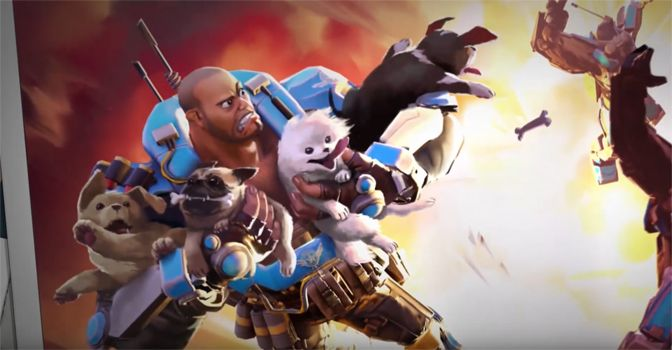Savage Worlds, a fast-paced, versatile tabletop role-playing game (RPG), has captivated players with its unique ruleset and thrilling gameplay. In 2018, Pinnacle Entertainment Group released the latest edition of this beloved RPG, Savage Worlds Adventure Edition (SWADE). One of the key mechanics within this system is “Hardness,” which directly impacts gameplay, particularly in combat and item durability.
In this article, we will delve into what “Hardness” means in SWADE Savage Worlds, how it affects gameplay, how to utilize it in various scenarios, and how to create engaging, strategic challenges for players. Whether you’re a game master (GM) looking to build more exciting encounters or a player wanting to enhance your tactical understanding, this guide will cover all aspects of Hardness in the Savage Worlds Adventure Edition.
1. What is Hardness in Savage Worlds Adventure Edition (SWADE)?
Hardness refers to the resilience or durability of an object, vehicle, or creature in SWADE. It represents how tough a target is to damage, often used to protect vital components like the armor of vehicles, force fields, or even special creatures with incredibly durable outer shells. Hardness plays a crucial role in determining whether a damaging blow penetrates an object or vehicle or is merely absorbed without causing significant harm.
In SWADE, Hardness is typically applied to objects and vehicles rather than characters. For example, if a character is trying to destroy a metal door, the GM would assign it a Hardness value, representing the door’s toughness. The attacking character must deal more damage than the object’s Hardness value to penetrate it or cause significant damage.
2. How Hardness is Calculated
Hardness is expressed as a numerical value that determines how much damage an object or vehicle can absorb before taking any meaningful damage. In Savage Worlds, this is not to be confused with Toughness, which is a stat that is more often associated with characters and creatures. Instead, Hardness represents how impervious something is to attacks.
- Example of Hardness in Gameplay: Imagine a group of adventurers in a SWADE campaign trying to destroy a heavily armored tank to stop an enemy force. The tank may have a Hardness value of 20, meaning any damage dealt to it must exceed 20 before it causes a dent or breaks through the armor.
If a player rolls a 25 on their damage roll, the result would be 5 points over the Hardness value (25-20=5), meaning that they successfully damaged the tank. However, if they rolled a 19 or less, the shot would simply ricochet off the armor, causing no harm.
3. Using Hardness in Combat
Hardness plays an essential role in combat, especially in scenarios involving vehicles, structures, or fortifications. It adds a layer of strategy for players, requiring them to think beyond simply attacking their enemies and instead focus on how to overcome tough obstacles or fortified positions. Here’s how it can affect different elements of combat:
- Vehicles: Hardness is most commonly applied to vehicles. Cars, tanks, spaceships, and other mechanical constructs usually have high Hardness values to represent their armored structure. Players will often need specialized weapons (such as rockets or explosive devices) to deal enough damage to overcome this Hardness.
- Barriers and Objects: Hardness also applies to walls, doors, and other environmental barriers that the party may encounter. GMs use Hardness to determine how easily players can break through doors or overcome barriers.
- Special Creatures: In some campaigns, GMs might assign Hardness to special creatures like golems or other magically-enhanced beings that have physical resistance to damage.
Hardness adds an extra layer of realism to the game, simulating how the physical world works and making fights more complex and interesting. This also encourages players to use more diverse tactics rather than relying solely on brute force.
4. Balancing Hardness in Encounters
When incorporating Hardness into your SWADE campaign, it’s important to balance the value of Hardness with the abilities and weapons available to your players. Too high of a Hardness value might lead to frustrating encounters where players cannot overcome obstacles, while too low might reduce the significance of challenges.
Here are a few tips to balance Hardness in your encounters:
- Adjust for Player Weapons: Take stock of what weapons and abilities your players have at their disposal. If your group has access to powerful explosives or specialized tools, you can afford to introduce objects or vehicles with higher Hardness values. However, if your players are working with basic weapons, the Hardness should be lower.
- Introduce Multiple Approaches: Don’t make Hardness the only challenge. Provide your players with alternative options, such as sneaking past heavily-armored vehicles or finding weak points in fortifications. This keeps the encounter dynamic and allows for creative problem-solving.
- Scale with the Campaign: As your campaign progresses, you can gradually increase the Hardness of objects, vehicles, and creatures to match the growing strength of your party. Scaling the difficulty ensures that the campaign remains challenging but fair.
5. The Role of Hardness in Vehicle Combat
Vehicle combat is a significant part of Savage Worlds Adventure Edition, and Hardness plays a critical role in these battles. When vehicles engage in combat, their Hardness values determine how much damage they can sustain before being destroyed or disabled.
- Vehicle Armor and Hardness: Vehicles in Savage Worlds come with armor ratings that provide extra protection against attacks. The Hardness value of the vehicle is derived from its armor, representing how tough the vehicle is to penetrate. Armored tanks, battleships, or futuristic spacecraft often have high Hardness values, making them tough opponents for players.
- Targeting Weak Points: To balance vehicle combat, GMs can introduce weak points in vehicles where the Hardness is lower. For example, a tank might have an extremely high Hardness on its front armor, but its rear could be less protected, encouraging players to strategize and flank the vehicle to target its vulnerabilities.
6. Hardness vs. Toughness
In SWADE, Hardness and Toughness serve different purposes, and understanding the distinction between them is crucial for GMs and players.
- Hardness is used for inanimate objects and vehicles, representing how durable they are against physical damage.
- Toughness is a stat applied to characters, creatures, and living beings. It determines how much damage a person or creature can endure before being shaken or wounded.
While Hardness is about withstanding structural damage, Toughness is about a creature’s ability to absorb physical harm. As a GM, knowing when to apply one over the other is essential for creating balanced and dynamic encounters.
7. Examples of Hardness in Savage Worlds Campaigns
Here are some practical examples of how Hardness could be used in a SWADE campaign:
- Scenario 1: Assault on a Bunker: The party is tasked with breaking into a fortified enemy bunker. The front doors have a Hardness of 15, while the reinforced concrete walls have a Hardness of 25. Players must decide whether to attempt to blow the doors open or find another way inside by bypassing the walls.
- Scenario 2: Vehicle Chase: The group is being pursued by enemy vehicles in a high-speed chase. The enemy vehicles have a Hardness of 18, making it difficult for the party’s standard weapons to damage them. The players will need to find a way to either outrun their pursuers or find a way to target a vulnerable spot in the enemy vehicles.
- Scenario 3: Defeating a Stone Golem: The party encounters a magically animated stone golem. The golem has a Hardness of 20 due to its stone exterior, making it resistant to most physical attacks. However, with some investigation, the players discover that the golem has a weak spot at the base of its neck, where the magic animating it is most vulnerable, with a reduced Hardness of 10.
8. Advanced Tips for GMs Using Hardness in SWADE
GMs can take their campaigns to the next level by using Hardness creatively. Here are some advanced tips for making the most of this mechanic:
- Dynamic Hardness: In certain scenarios, Hardness could fluctuate depending on in-game conditions. For example, a magical force field might have a high Hardness when first encountered, but after being attacked with specific spells, its Hardness could decrease over time. This encourages players to adapt their strategies.
- Soft Hardness: Instead of having an object with a single Hardness value, GMs can introduce the concept of “soft Hardness,” where some parts of an object or vehicle are easier to damage than others. For instance, a heavily-armored tank might have weak treads that are easier to destroy than the tank’s main body.
- Hardness and Environmental Factors: Use environmental factors to enhance the impact of Hardness. For instance, a wall might have a Hardness of 15 under normal conditions, but if the players are in a storm or under siege, the rain or artillery bombardment could weaken the wall, reducing its Hardness.
9. Conclusion
Hardness in Savage Worlds Adventure Edition adds a rich layer of realism and tactical depth to gameplay. By assigning Hardness values to vehicles, objects, and certain creatures, GMs can create more complex and engaging scenarios. Players are encouraged to think beyond simple combat and embrace strategic problem-solving, enhancing the overall experience.
Whether you’re a GM looking to build challenging encounters or a player eager to understand the nuances of SWADE, mastering the concept of Hardness will help you get the most out of your Savage Worlds campaigns. So, gather your group, load up your character sheets, and prepare to engage in exciting, action-packed adventures where Hardness becomes a critical component of your strategy.


